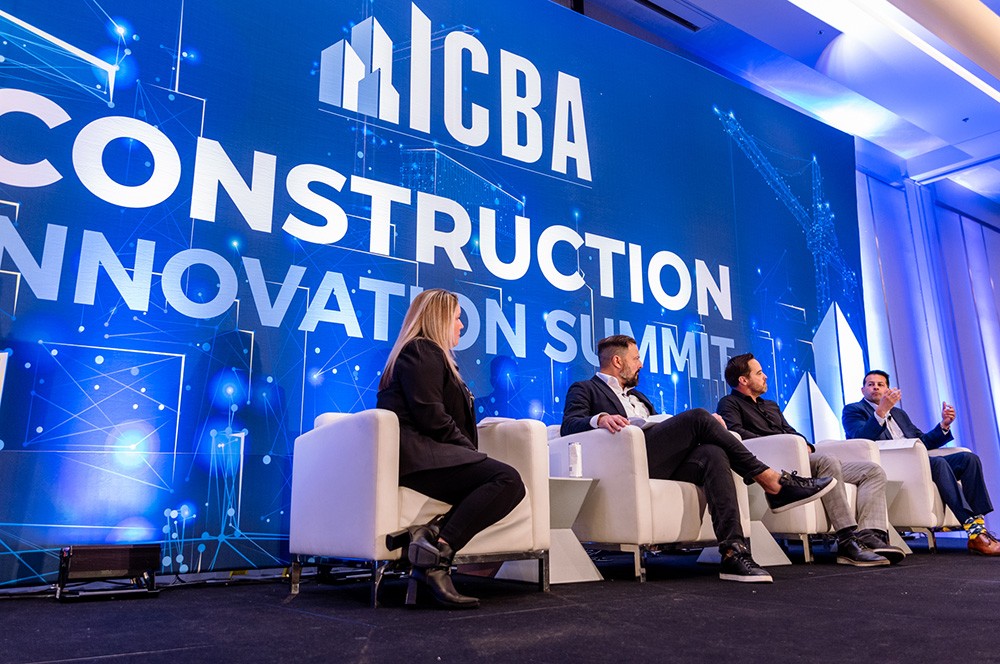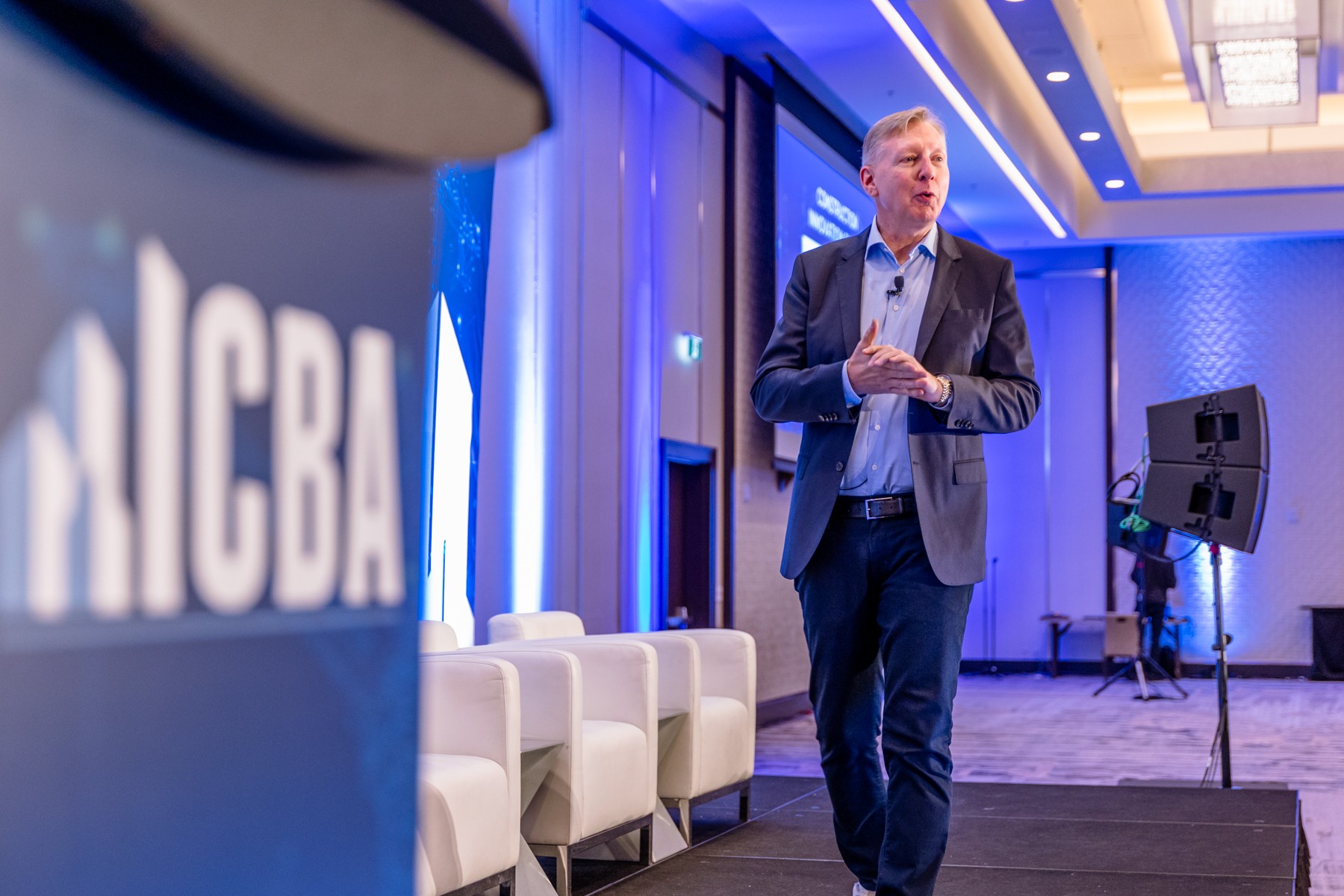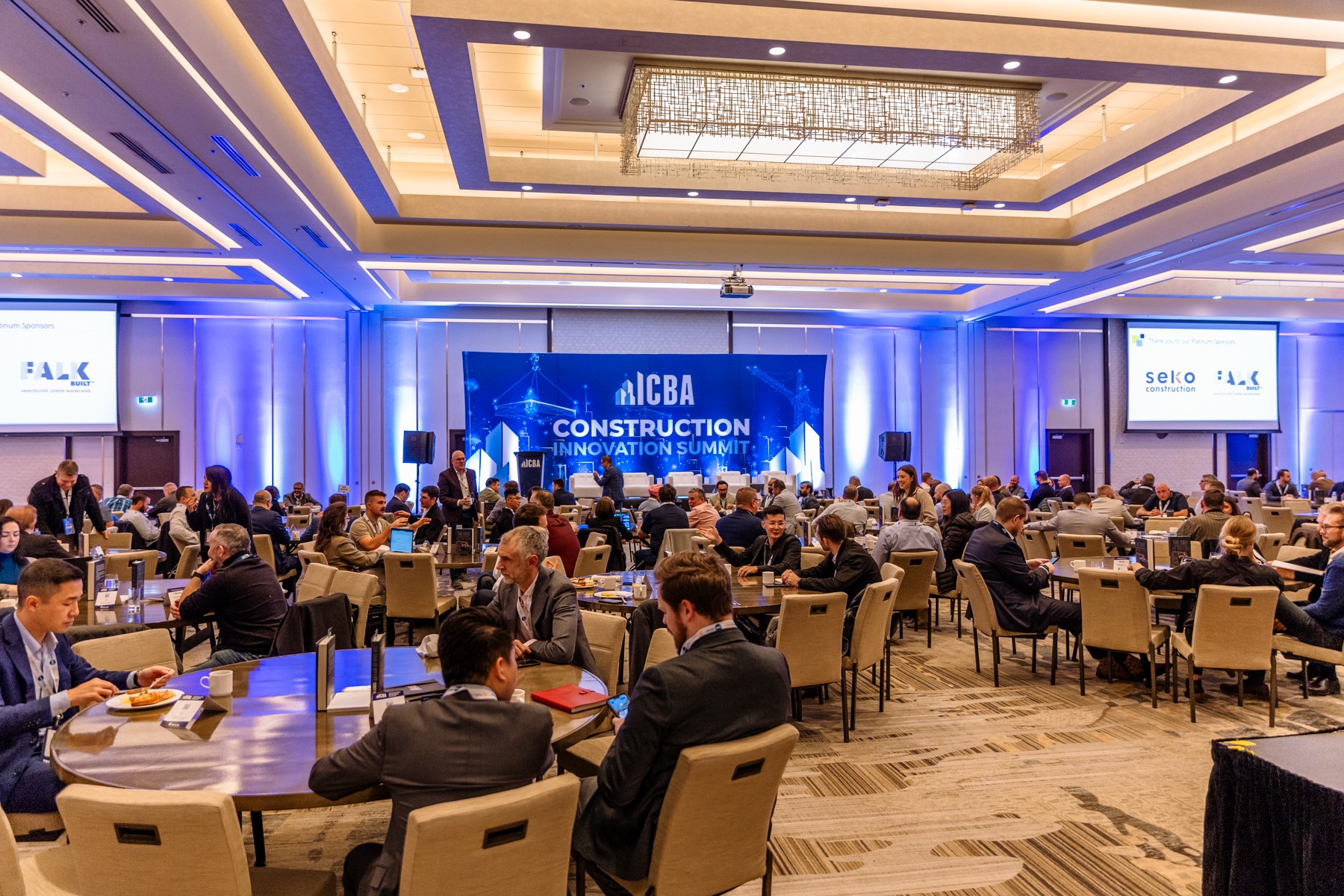Innovation Summit encourages industry collaboration
The inaugural event looked to spur discussion about construction’s biggest challenges.

The construction industry needs to work together if it wants to address its many challenges.
This was one of the main messages to come from the first-ever Construction Innovation Summit in Vancouver. The event, organized by the Independent Contractors and Businesses Association, brought together hundreds of the nation’s leaders for a two-day conference focused on pushing the industry forward. The event featured panels, keynotes and talks from some of construction’s brightest minds.
Getting better together
“Collaboration across everything — from architects, engineers, sub-trades, owners, and general contracts — was a very strong theme,” said ICBA President Chris Gardner. “To tackle the challenges that emerge in any project, the foundation is cross-discipline collaboration.”
The group organized the two-day conference in response to the increasing pressures builders face.
“The theme of innovation in construction is a timely one because when you look at Canada as a whole, we have a big productivity and innovation challenge,” said Gardner. “It has been decades in the making.”
However Gardner noted that construction’s reputation for lagging when it comes to innovation isn’t completely justified.
“I do think there’s a lot more technology and innovation in the industry than it gets credit for,” he said. “There’s roughly $5 billion invested each year across North America in software directly related to construction.”
But he believes more can be done and, with the multiple challenges the industry is facing, innovation is becoming a necessity. Gardner explained that in 2020 when the global pandemic hit it forced construction to rethink how it operates. This crisis was then followed by global supply chain disruptions. Then material costs rose, inflation became a national issue and interest rates are at record highs. This is on top of an ongoing labour shortage impacting construction and other industries.
“We’ve sort of gone from one crisis to another and as a result, all these factors are driving contractors and construction leaders to do things better, build more with less and be more efficient,” said Gardner.
It’s a challenge that trickles down to all Canadians. Gardner noted that the rising costs and risks associated with construction and development are contributing to the housing affordability crisis.
“Part of dealing with affordability and bringing costs down is building more supply and using innovation to take some of the cost out of the building process,” said Gardner.

He noted that government also has its own role to play by cutting red tape and approving projects faster.
Following the pandemic, many have wondered if the industry will be getting back to normal. With the ongoing challenges, Gardner believes that this is the new normal.
“We actually never got back to normal. COVID was the first big shock,” he said. “There have been lots of other shocks. One right now is the uncertainty of geopolitics. Turn on the news feed and it’s right there. I think everyone accepts that getting back to normal is something that doesn’t seem to be a path right now.”
But he hopes that events like the Construction Innovation Summit can help galvanized industry leaders.
“There is a whole group of uncertainties but at the same time we need to build more housing and infrastructure,” he said. “The need for that isn’t going away. So it was great to bring everyone together and ask them how we can tackle these challenges.”
Making construction’s voice heard
Dave Baspaly, president and CEO of the Council of Construction Associations (COCA) in B.C., focused on analyzing government action’s in the province and how the industry can make their voices heard.
“There certainly has been a labour-leaning force right now that has moved a lot of things into play that have not been good for the industry,” said Baspaly. “And we have not been able to express the consequences because of the speed of the regulatory calendar.”
Baspaly explained that traditionally, changes moved more slowly. This gave the industry more time to react, give input and help shape health and safety regulations. Some of the rapid changes happening include topics like mental health, asbestos, soft tissue damage and job site bathrooms.
“You have to slow it down and go at the pace of the people,” said Baspaly. “COCA is has been working hard with association members to slow things down. There is no need to go 100 mph with all these regulations concurrently. There is no prize for speed and it will just cause issues.”
Baspaly also fears that B.C.’s approach could threaten the financial stability of WorkSafeBC. He believes rates will go up and the reserve will be bled down, undermining failsafe features. He also fears that rushed decisions could set precedents that will impact the industry for decades.
“Once we enter into these situations, even with the best intentions, we end up with some regulations becoming really unworkable in the real world because it’s effectively just a cash transfer — moving money to move out benefits,” he said. “There is no way to repatriate those claims back to where they should be and eventually you have insolvency down the line. We need sustainable regulations that work for labour and the employer long-term. There is not point trying to win at the other’s expense.”
Baspaly stressed that writing emails and letters voicing industry concerns matters, especially when there are large numbers of people and companies doing so. He strongly encouraged the industry to voice their concerns directly or through associations that they are a part of.
Taking the first steps toward innovation
Amy Marks, executive vice president of Symetri USA and YouTube’s “Queen of Prefab”, spoke about how builders can take their first steps towards innovation and her vision for the near future of construction.
“I was incredibly impressed by this event,” she said. “You had leaders from all around the region coming together, having conversations, learning from each other. I think it’s important. It’s not about one company doing well when we are trying to address issues around needing more hospitals, data centres, roads and homes. All the boats need to rise and we have to get everybody to change as an ecosystem.”
Marks explained that this ecosystem includes architects, sub trades, general contractors, product manufacturers, engineers, lawyers, risk managers, procurement arms, government, owners and anybody else that touches the construction process.
“It really takes an ecosystem’s attention and maturity to really enable business to be done differently,” she said.
Her talk also zeroed in on some small steps builders can take to begin industrializing their process. She demonstrated how Revit can integrate with a program called Naviate to start fabricating parts from BIM models.
She also noted that many are looking to take advantage of AI, machine learning and other emerging tools. But she explained that one first needs to get a concrete idea of what their business goals are so they can begin structuring and organizing their data to accomplish those goals.

“It’s almost like asking someone if they want to build a library for a third-grade class or if they want to create the Library of Congress. Those are very different,” she said.
According to Marks, charging ahead with technology changes without a clear idea of what you want can just reinforce bad processes and lead to more waste.
Looking to the future, Marks sees construction, like many other industries, shifting from being a process to being a product. She envisions an industry where parts of a building can be chosen by designers at the start of a project and that product’s performance, specifications, environmental impacts and other meta data is readily available.
“You should start thinking about how to make a product out of what you make and how you can digitize it so someone can consume it in an organized manner,” she said.
She believes the mechanical, electrical and plumbing portions of buildings are especially ripe for this kind of innovation.
“You want people to be able to design with certainty and have little waste,” she said. “A lot of money is made from wasteful business processes. People make money on the lack of information silos. I believe pressure has to come from the top down — the big owners, governments and others — and they have to start incentivizing people not to do that.”


